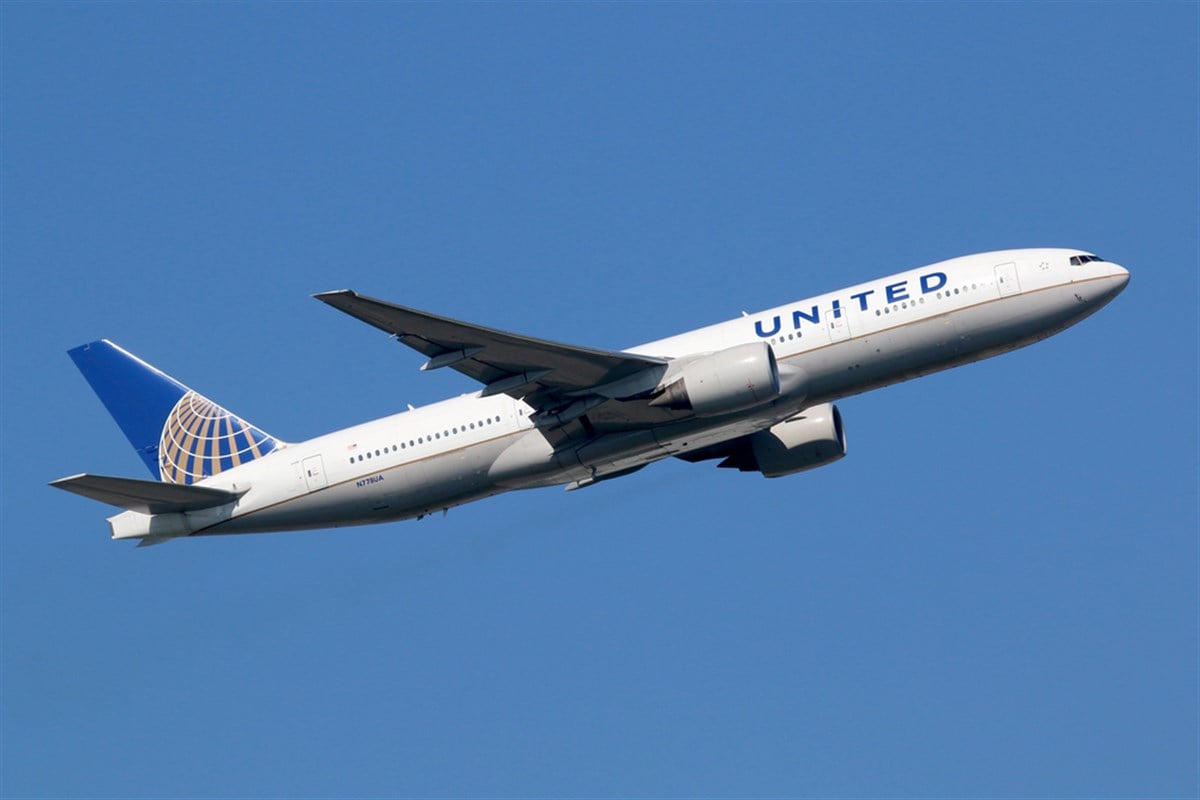Key Points
- United Airlines’ earnings beat signals improved financial performance and resilience.
- A strategic focus on profitable routes and cost management drives United Airlines’ growth trajectory.
- United Airlines’ focus on balance sheet strength positions the company for long-term stability in a dynamic market.
- 5 stocks we like better than United Airlines
United Airlines NASDAQ: UAL delivered a surprisingly solid performance in the first quarter of 2024, exceeding analyst projections on several key financial metrics. While the global airline sector continues to navigate economic and regulatory challenges, United Airlines’ earnings results and a revised outlook point to a company strategically positioning itself for future growth. United Airlines’ financial results offer a crucial snapshot of the airline industry’s continued recovery. Is United’s robust earnings and upbeat outlook a signal of broader strength across the airline industry, or is the company an outlier?
United’s Q1 Performance: A Closer Look
In the first quarter of 2024, United Airlines exceeded expectations by outperforming analyst projections on multiple key financial metrics, delivering a surprisingly strong performance. Both earnings per share (EPS) and total operating revenue surpassed forecasts. While the temporary grounding of MAX 9 aircraft created a $200 million headwind, the company’s Q1 results indicate improving profitability and strong demand within the travel sector.
Furthermore, United’s bullish guidance for the second quarter underscores management’s confidence in the company’s trajectory. This positive outlook has reinforced investor sentiment, signaling a belief in the airline’s ability to navigate ongoing challenges and maintain its recovery momentum.
United demonstrated earnings strength with an adjusted diluted EPS of down 15 cents, a substantial improvement over the prior year’s significantly larger loss. Total operating revenue increased 9.7% YOY to $12.5 billion, with passenger revenue alone accounting for a 10.1% increase to $11.3 billion. These figures reflect a healthier top line, driven by continued post-pandemic travel demand.
While the cost per available seat mile, excluding fuel and other costs (CASM-ex), increased by 4.7%, United partially offset this rise through a 0.6% decrease in overall CASM. These indicators suggest United strategically prioritizes profitability and operational efficiency alongside revenue growth.
United Airlines
(As of 04:00 PM ET)
- 52-Week Range
- $33.68
▼
$58.23
- P/E Ratio
- 6.19
- Price Target
- $64.60
Financial Fitness: A Leaner United
A key highlight of United Airlines’ recent performance is the company’s renewed focus on balance sheet integrity and long-term financial resilience. United proactively managed its debt levels throughout the pandemic, a prudent strategy differentiating the airline from peers facing higher debt burdens. This emphasis on financial health is reflected in United’s improving operating margins. These improvements stem from a combination of strategic route optimization, disciplined cost controls and a clear commitment to prioritizing profitable growth.
A stronger balance sheet and focus on sustainable profitability are critical for airlines. They provide greater flexibility to navigate market uncertainties, such as economic downturns or unforeseen disruptions. United’s proactive stance positions the company to weather potential challenges while pursuing expansion opportunities, a positive sign for investors focused on long-term stability.
Analyst Outlook: Mixed Signals, Measured Expectations
Investor sentiment surrounding United Airlines reflects a blend of cautious optimism and longer-term confidence. United Airlines’ analyst community acknowledges the company’s improving financial health, with a stronger balance sheet and focus on profitable routes contributing to the positive outlook. United’s ability to maintain strong pricing within a competitive market further bolsters this sentiment.
However, some analysts express reservations stemming from broader economic factors. Rising fuel costs, ongoing labor market challenges and the potential for a general economic downturn could present headwinds for United and the airline industry as a whole.
While acknowledging these potential risks, the analyst consensus suggests United is on a positive trajectory. Investors are advised to carefully weigh the company’s strengths and the broader market risks when evaluating the stock’s potential.
Changing Fleet, Evolving Strategy
United Airlines has proactively adapted its fleet strategy in response to the ongoing challenges of aircraft manufacturer delays and disruptions. The decision to lease Airbus A321neos demonstrates a pragmatic approach, ensuring United secures the necessary aircraft to support its evolving network and growth ambitions. This move balances the need for capacity with the realities of the current supply chain environment.
The Airline Industry: Navigating Shifting Currents
The evolving labor landscape presents another critical consideration for United and the broader industry. Ongoing union negotiations and potential labor disputes can cause disruptions and additional costs. Investors should closely monitor these developments as they may impact the company’s operational efficiency and financial performance.
Furthermore, United operates within a heavily regulated environment. Increased scrutiny from the FAA adds a layer of complexity, with potential implications for operational procedures and compliance costs. Investors should stay informed about these potential challenges and how United navigates this regulatory landscape, as it directly affects the company’s ability to maintain smooth operations and long-term success.
Considerations for Investors
When evaluating United Airlines as an investment opportunity, it’s crucial to weigh its potential with the inherent risks. On the positive side, United’s improving financial health, strategic focus and the ongoing recovery in travel demand all point to potential growth. Conversely, investors should be aware of the broader industry challenges with fuel costs, regulatory oversight and possible disruptions due to labor negotiations. Moreover, the cyclical nature of the airline industry means investors should be prepared for volatility in share prices.
United Airlines’ Q1 earnings report paints a picture of a leaner and more strategically focused airline than in past years. While the airline industry remains sensitive to broader economic forces, United’s actions to bolster its financial position and focus on profitable routes position it for potential growth. Investors interested in United should carefully track the evolution of fuel costs, industry-wide labor trends and the company’s execution of its long-term strategy.
MarketBeat keeps track of Wall Street’s top-rated and best performing research analysts and the stocks they recommend to their clients on a daily basis. MarketBeat has identified the five stocks that top analysts are quietly whispering to their clients to buy now before the broader market catches on… and United Airlines wasn’t on the list.
While United Airlines currently has a “Moderate Buy” rating among analysts, top-rated analysts believe these five stocks are better buys.
View The Five Stocks Here
Wondering when you’ll finally be able to invest in SpaceX, StarLink, or The Boring Company? Click the link below to learn when Elon Musk will let these companies finally IPO.

